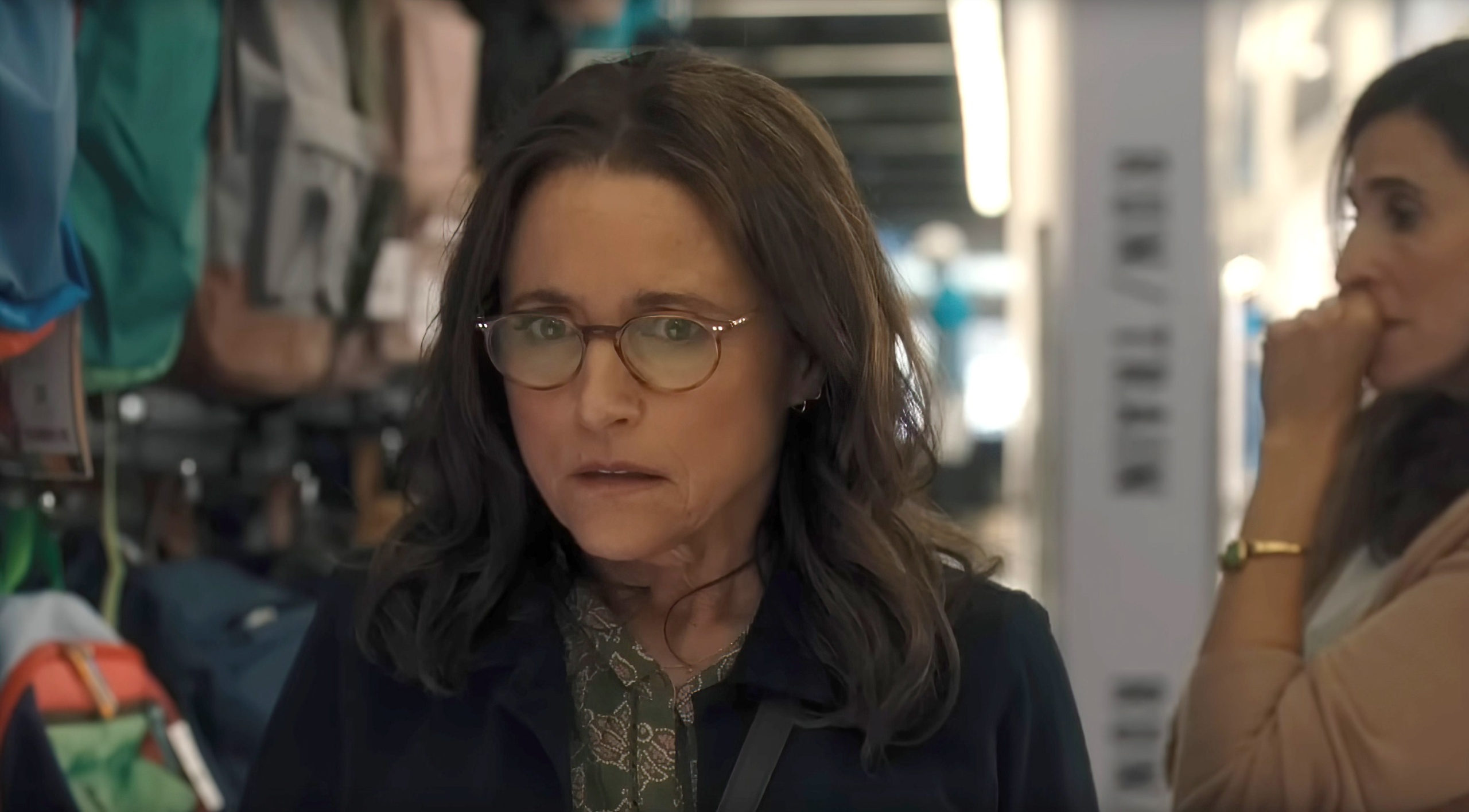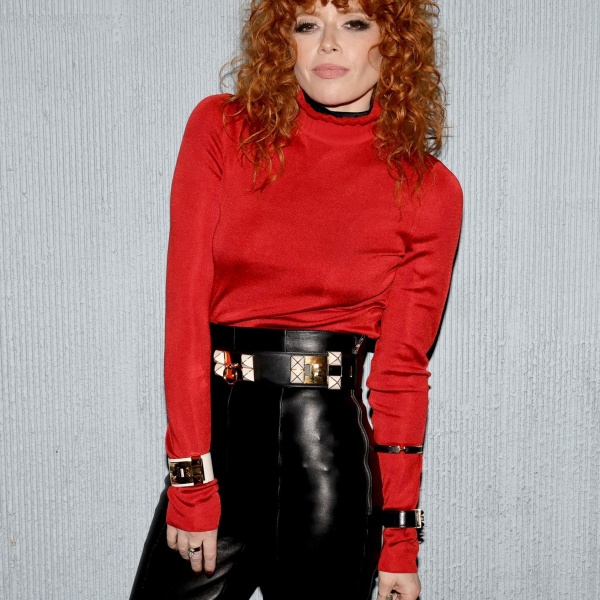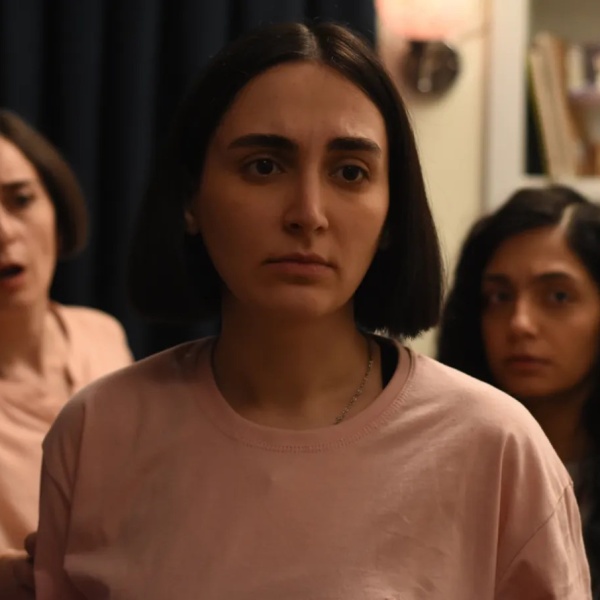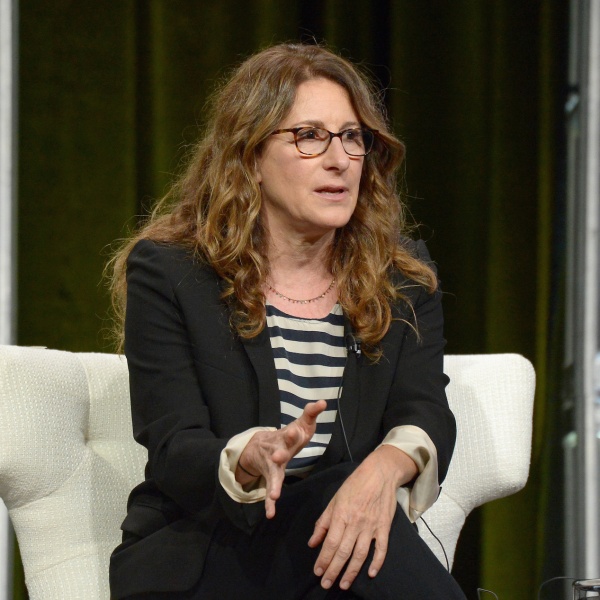“You Hurt My Feelings” is the latest exquisitely mounted comedy from writer-director Nicole Holofcener, the American cinema’s master of marital unease. The premise is classic Holofcener: A writer (Julia Louis-Dreyfus) overhears her husband (Tobias Menzies) saying what he really thinks of her work and reevaluates what she thought she knew about her relationship and, by extension, her own identity. That reevaluation provides fodder rich in both comic possibilities and penetrating insights into the subtle negotiations, minor and major grievances, and temptations and disappointments that make up a long-lasting marriage. “You Hurt My Feelings” is unblinking in the pain it puts its protagonist through, yet the breadth of Holofcener’s perspective yields as much hope and genuine romance as it does awkwardness, alienation, and pain; it’s perhaps the closest any contemporary American filmmaker has come to Jean Renoir.
What’s all the more remarkable is that “You Hurt My Feelings” clocks in at just over 90 minutes. Holofcener’s economy of expression as both a writer and director has become so streamlined that she can express an epic novel’s worth of ideas in less time than it takes most tentpoles to get through their character introductions. “I’m pretty brutal about cutting things out,” she told IndieWire’s Filmmaker Toolkit podcast. “I wish that so many movies were a half hour shorter.” That said, Holofcener isn’t the kind of director who drastically reshapes her movies in the editing room. “I can’t make my movies something they’re not through editing. It is what it is, you know? You just want to show the best movie you can and get the best performances from the footage.”
Great performances have always been key to Holofcener’s work, and “You Hurt My Feelings” is no exception. The director’s instincts for casting are unerring, from the leads down to richly observed supporting characters who may only appear in a scene or two. Louis-Dreyfus and Menzies are particularly skilled at conveying complex emotions through simple gestures and line readings, exhibiting the same precision in their body language as Holofcener does through her camerawork. And given the vagaries of independent production, they often did so under less-than-ideal circumstances.
“We shot the most intense scene, the scene where she overhears him, on the first day,” Holofcener said. “It was a tight schedule and we couldn’t shuffle things, and I think we only got the store on that day. It was unavoidable. So there was no history between these characters and the betrayal hadn’t been built up to. I don’t think the actors were happy that was their first day, but they did great.”

That tight schedule meant that Holofcener came in every day with a thoroughly designed visual strategy, even if it might shift according to locations or performances. When asked if she lets the actors try out their own blocking before imposing her own thoughts, Holofcener laughed. “There’s no time for that! That’s just asking for disaster. What I’ll do is block out the scene with the DP and AD and write that down or draw pictures. The actors come on set and I say, ‘This is what I’ve blocked out. This is what makes sense to me. If you’re willing to try it, let’s try it. And if it’s not working we’ll change it.’”
Even on rare occasions when actors resist the idea of predetermined blocking, Holofcener usually finds that they like what she has planned. “I would say, ‘Just try it.’ And often they’re like, ‘Yeah, this is actually what I was going to do.’ People kind of like to be told where to start from. They want to be directed.”



